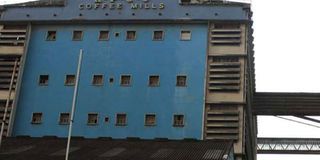Under Moi, economy survived collapse only by divine grace

Kenya Planters Co-operative Union headquarters in Nairobi. Its collapse was designed and implemented during Moi's reign. PHOTO | FILE | NATION MEDIA GROUP
What you need to know:
Many readers of this column will not remember that we used to own the largest insurance company in the marketplace — the Kenya National Assurance Company.
Also, the current dire state of the coffee industry is, itself, attributable to politically motivated assaults and weakening of independent farmer organisations that started in the late 1980s.
We Africans don’t say bad things about people who have died. Yet when I reflect on broad economic trends and management of economic affairs during the 24 years Moi was in power, what jumps out is corruption and plunder of public resources and a stagnant economy.
Many readers of this column will not remember that we used to own the largest insurance company in the marketplace — the Kenya National Assurance Company.
Also, the current dire state of the coffee industry is, itself, attributable to politically motivated assaults and weakening of independent farmer organisations that started in the late 1980s.
Many may not remember one Alfrick Birgen, who designed and implemented the collapse of institutions such as Kenya Planters Cooperative Union (KPCU), Kenya Cooperative Creameries (KCC) and Kenya Farmers Association (KFA).
In their wisdom, farmers in colonial Kenya, while establishing these institutions, made sure that the bodies were registered as both limited liability companies and cooperatives. But the Moi regime turned them into appendages of the office of the then-commissioner of cooperatives, the late Birgen. I believe if KFA Ltd had been left alone to operate independently, we would not be having the mess and corruption in distribution of subsidised fertiliser. Still, you have to put the Nyayo regime in a historical context to understand and appreciate how the economy was managed by Kenya’s longest-serving strongman.
Moi came to office in 1978 after the global energy crisis of 1973, when Kenya was coming out of the glorious years. Those days, economic policy focused on land redistribution and small-scale agriculture.
We concentrated on building strong rural agricultural cooperatives. Our coffee, cotton and dairy cooperatives were financially strong entities with solid assets. In other words, economic policy aimed at improving access to productive assets by the majority of the population. We practised redistribution policies because policy aimed at reducing the gap in distribution of national income.
A key plank of economic planning in those early years was devolution. District councils maintained roads, supported schools and dispensaries and ran courts and tribunals.
In terms of industrialisation, policy was based on an import substitution strategy, where manufacturers were treated as infant industries that needed liberal privileges and heavy-duty protection. The defining features of those early years included the office of the price controller, a foreign exchange allocation committee, a capital issues committee and an import controls committee.
It was Moi who was unfortunate enough to lead the dismantling of the command and control economy by implementing Structural Adjustment Programme (Saps) policies. The bible of the liberalisation policies was the Philip Ndegwa’s Working Party on Government Expenditure of 1982.
The price controller was sent home. The foreign exchange allocation committees were dismantled. Manufacturers could no longer issue ‘no objection certificates’ to businesses that wanted to import goods from abroad. It was Moi’s government that implemented the first privatisation programme. He experimented with cost-sharing in government hospitals.
The Saps would continue for more than 10 years.
Austerity policies meant crippling cuts in government expenditure and a huge drop in public spending. The regime implemented the first massive retrenchment of civil servants, where 400,000 of them were sent home.
Faced with the prospects of being dethroned from power, in the build-up to agitation for multiparty democracy, and as the first multiparty elections approached, the regime raided the Central Bank of Kenya and siphoned billions through the Goldenberg scandal.
It was then that we witnessed the emergence of a large number of crooked billionaires — Ketan Somaia, Kamlesh Pattni, Ajay Shah and Nassir Ibrahim.
Owning a commercial bank became very fashionable. The Central Bank was raided by a veritable army of rent-seekers through conduits which included Exchange Bank, Trade Bank, Delphis Bank, Trust Bank and the Youth for Kanu 92 (YK92) crowd. We still remember the three one-sentence letters by the late Charles Koinange on whose authority Sh8.8 billion was siphoned off State coffers in a day.
But no financial instrument did more damage — in terms of creating loopholes for money laundering — than the Moi-era Forex C certificates. We still do not know what happened to 18 sackfuls of redeemed Forex Cs which disappeared from the CBK vaults and were suspected to have been presented for redemption multiple times.
We printed money at a massive scale. For the first time ever, the CBK made losses — enormous losses.





